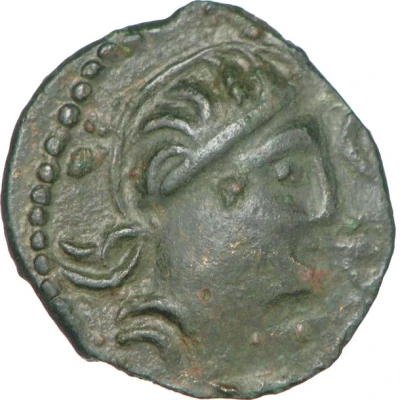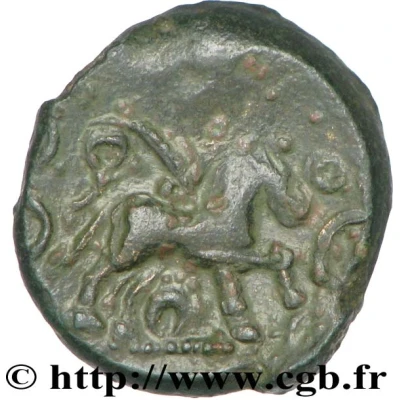


© CGB
Bronze with helmeted head and horse 60 BC - 50 BC
| Bronze | 2.72 g | 16 mm |
| Issuer | Durocasses (Gallia Armorica) |
|---|---|
| Type | Standard circulation coin |
| Years | 60 BC - 50 BC |
| Composition | Bronze |
| Weight | 2.72 g |
| Diameter | 16 mm |
| Thickness | 1.5 mm |
| Shape | Round (irregular) |
| Technique | Hammered |
| Orientation | Variable alignment ↺ |
| Demonetized | Yes |
| Updated | 2024-10-09 |
| Numista | N#190820 |
|---|---|
| Rarity index | 97% |
Reverse
Horse passing to the right, surmounted by a palm; two crescents in front of the horse at the level of the legs; circular graining.
Comment
Under the term Parisian region are gathered all the coins, generally of bronze or pewter, which cannot be attributed to the Parisii, even if sometimes some of their copies have been found in Paris, in the Seine. These "peripheral" coins are often found locally or located in geographical areas of the current Paris region. Need we remember that the Parisii emancipated themselves late from Senone tutelage, even if this cliché is sometimes called into question today? These pagi coins must have had a limited circulation area and are often, even today, rare.Interesting fact
One interesting fact about this coin is that it features a unique blend of Celtic and Roman influences in its design. The helmeted head on the obverse (front) side of the coin is a distinctly Celtic element, while the horse on the reverse (back) side is a common motif in Roman coinage. This blending of styles reflects the cultural exchange and fusion that occurred during the period of Roman expansion into Celtic territories.